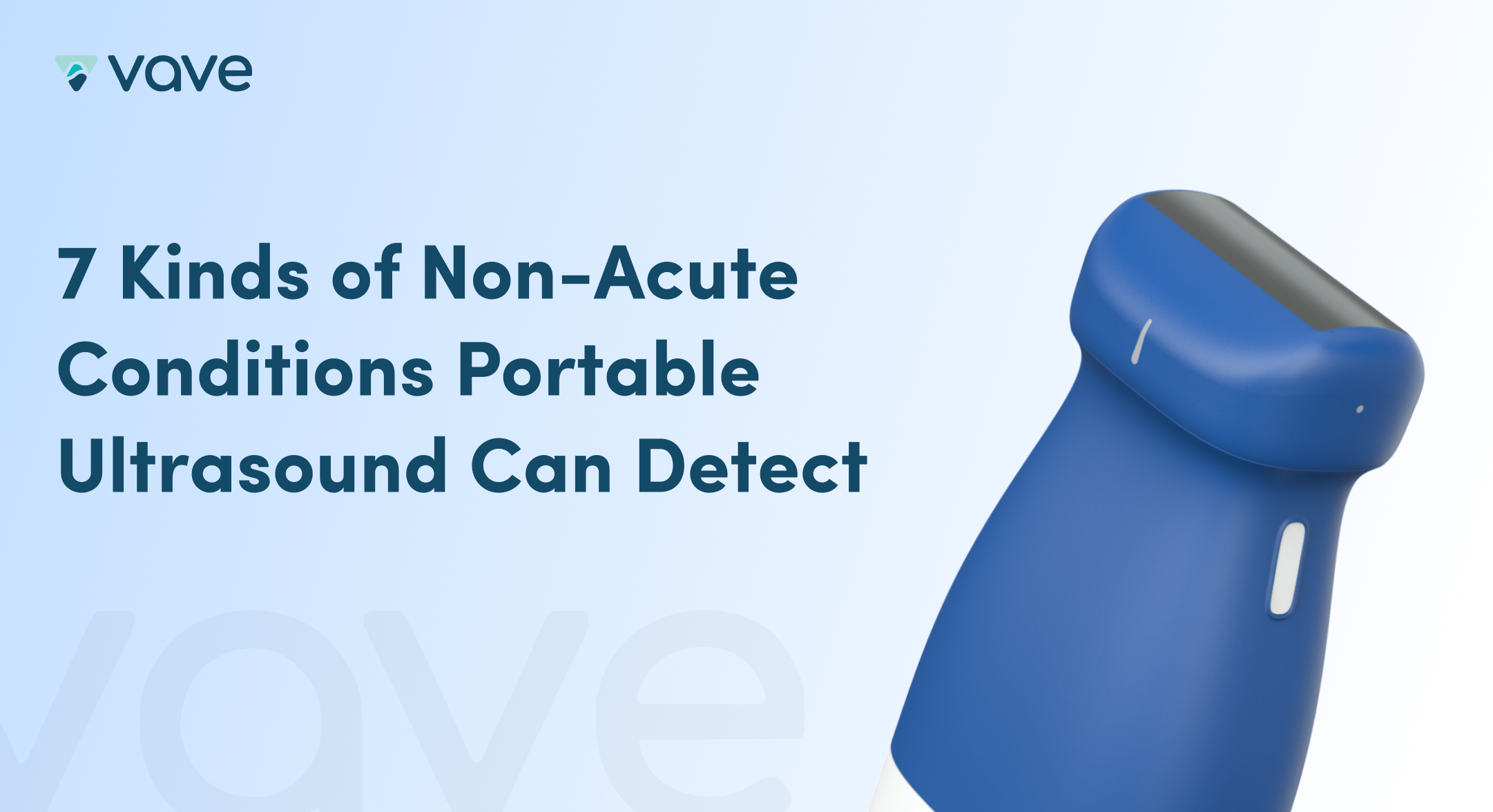Many areas of non-acute care require imaging to monitor disease progression and assess treatment options. However, high costs, long wait times, and the burden of frequent scans create major barriers to timely, effective care.
Point-of-care ultrasound (POCUS) helps address these challenges by enabling more frequent and flexible scanning without sacrificing image quality. Using handheld devices to eliminate the restrictions of traditional cart-based systems, clinicians and nurses across multiple areas of non-acute care benefit from:
- Regular Safe Scanning: POCUS does not emit radiation, making it safe for repeated use and enabling more frequent monitoring of chronic conditions.
- Seamless Portability: Handheld devices can be used on home visits and in remote settings, enabling family and rural physicians to support chronic condition management.
- Real-Time Assessments: POCUS delivers insights to guide immediate clinician action, helping triage care and accelerate decision making.
This makes POCUS essential for non-acute care over the coming years. But where exactly can the technology deliver the most value for non-acute care?
7 Kinds of Non-Acute Conditions Ultrasound Can Detect
1. Musculoskeletal & Rheumatologic Conditions
Joint and soft tissue disorders represent one of ultrasound's most valuable applications in chronic care. The technology excels at visualizing inflammation and structural changes that traditional X-rays may not detect certain soft tissue changes, with key use cases including:
- Osteoarthritis: Detecting joint effusion, cartilage thinning, and osteophyte formation
- Rheumatoid arthritis: Assessing synovitis, erosions, and disease activity progression
- Tendinopathies & bursitis: Chronic rotator cuff tears, Achilles tendinopathy, and subacromial bursitis
2. Cardiovascular & Vascular Conditions
Cardiac and vascular ultrasound provides essential monitoring for heart failure patients and peripheral vascular disease. These assessments guide treatment decisions and prevent acute complications through early intervention for:
- Heart failure: Left ventricular function evaluation, ejection fraction assessment, and volume overload detection
- Chronic venous insufficiency: Valve incompetence identification and reflux pattern analysis
- Peripheral artery disease: Arterial narrowing visualization and plaque assessment
- Atrial fibrillation management: Atrial enlargement monitoring for stroke risk stratification
3. Pulmonary & Respiratory Conditions
Lung ultrasound has transformed respiratory care by revealing pathology invisible to traditional chest X-rays. POCUS increasingly complements stethoscope examinations in primary care settings to help clinicians identify:
- COPD: B-line detection indicating pulmonary edema and hyperinflation changes
- Interstitial lung disease: Fibrosis pattern identification and progression monitoring
- Pleural effusions: Recurrent fluid collection surveillance for volume and characteristics
4. Renal & Genitourinary Conditions
Kidney and urological assessments benefit significantly from ultrasound's ability to evaluate both structure and function. These examinations guide treatment decisions and monitor disease progression effectively, enabling clinicians to evaluate:
- Chronic kidney disease: Small echogenic kidney detection with cortical thinning assessment
- Polycystic kidney disease: Cyst monitoring for growth patterns and complications
- Benign prostatic hyperplasia: Prostate sizing and post-void residual measurement
- Nephrolithiasis: Recurrent stone surveillance and hydronephrosis monitoring
5. Gastrointestinal & Hepatobiliary Conditions
Abdominal ultrasound provides crucial insights into chronic liver disease and digestive disorders. Regular monitoring prevents acute complications and guides therapeutic interventions for:
- Chronic liver disease/cirrhosis: Nodular surface assessment, ascites detection, and portal hypertension signs
- Gallstones: Chronic biliary disease monitoring and complication prevention
- Inflammatory bowel disease: Intestinal wall thickening and stricture formation evaluation
6. Endocrine & Metabolic Conditions
Hormonal disorders require ongoing surveillance that ultrasound delivers safely and efficiently. These assessments support treatment planning and monitor therapeutic responses over time for:
- Thyroid nodules/goiter: Size tracking, vascularity assessment, and biopsy guidance
- Parathyroid adenomas: Localization for surgical planning in hyperparathyroidism cases
- Diabetic complications: Peripheral vascular disease screening and nephropathy-related findings
7. Women's & Men's Health
Reproductive health conditions benefit from ultrasound's detailed soft tissue visualization capabilities. These examinations support diagnosis, monitor treatment responses, and guide intervention timing, providing particular value when looking at:
- Uterine fibroids: Growth pattern tracking for treatment decision-making
- Ovarian cysts: Differentiation between complex and straightforward lesions requiring intervention
- Chronic pelvic pain: Adnexal pathology identification and endometriosis cyst detection
- Testicular varicoceles: Venous dilation assessment in chronic male infertility workups
Transform Non-Acute Care with Vave Health
Vave Health is the world's first wireless, handheld, whole-body ultrasound with a single PZT transducer. It is trusted by providers across all areas of non-acute care to produce high-quality images that direct treatment and improve care. It’s also widely used in acute care settings; read more about how clinicians rely on Vave in acute care here. And we make it easy to adopt, with:
- No hidden costs or subscription fees
- Best-in-class customer support
- Built-in training programs to develop POCUS proficiency faster
Want to see how it could help improve care at your practice?
Book a Demo













.webp)
.svg)
.webp)
.svg)





.svg)

.svg)
.svg)
